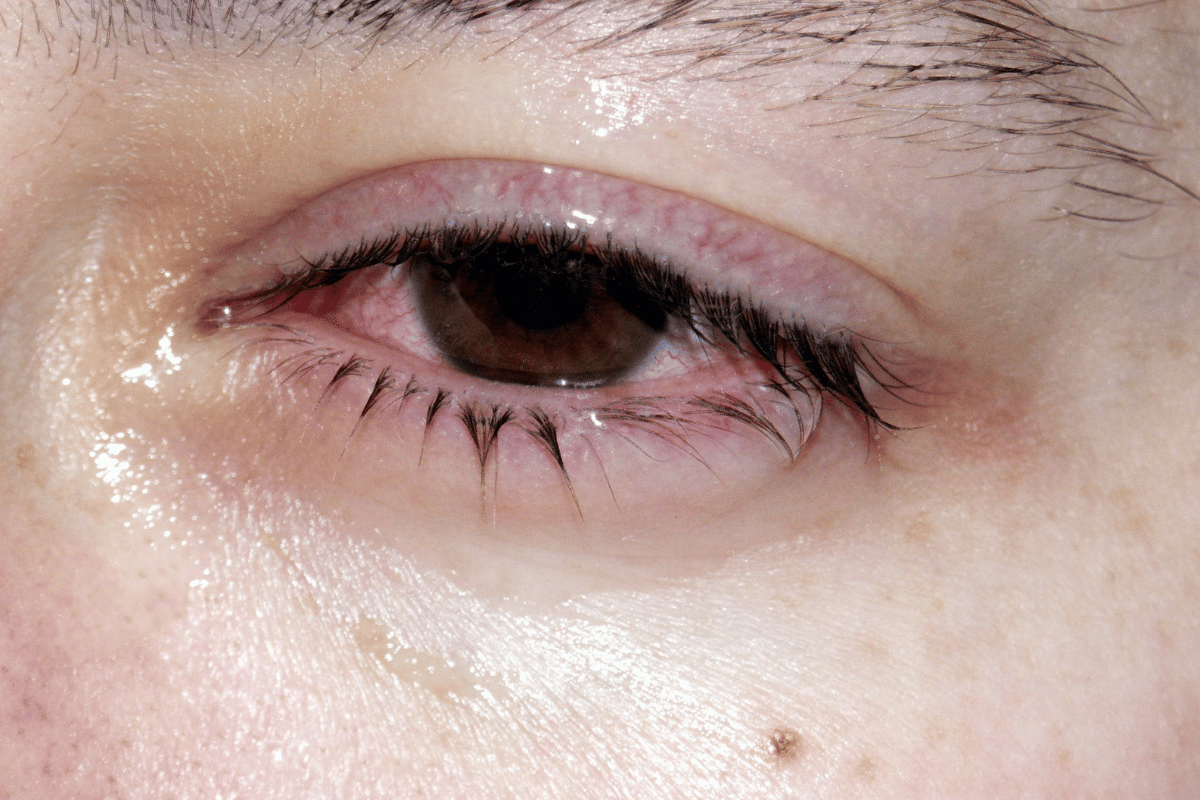Carboxymethylcellulose Sodium Eye Drops Mechanism of Action: An In-depth Analysis
Carboxymethylcellulose sodium eye drops have revolutionized ophthalmology, offering a therapeutic solution to a range of ocular conditions. Understanding the intricacies of their mechanism of action is pivotal for ensuring their optimal use in clinical practice. As patients and practitioners seek effective and comfortable treatments, delving into the specifics of how these eye drops interact with the ocular environment becomes essential. This article embarks on an in-depth analysis of the mechanism of action behind carboxymethylcellulose sodium eye drops, shedding light on their significance in ophthalmic care.
Carboxymethylcellulose sodium eye drops have emerged as a versatile tool in addressing a spectrum of ocular concerns. Whether it’s alleviating dryness, soothing irritation, or promoting healing, these eye drops have garnered attention for their efficacy and comfort. As we navigate the complexities of their functioning, we’ll uncover the dynamic interplay between the Carboxymethylcellulose Sodium Eye Drops Mechanism of Action and their therapeutic outcomes. In doing so, we not only gain insights into their effectiveness but also enhance our comprehension of their role in fostering ocular health.

Carboxymethylcellulose Sodium Eye Drops: Formulation and Application
The realm of ophthalmology has been significantly enriched by the advent of carboxymethylcellulose sodium eye drops, a formulation meticulously crafted to address a diverse array of ocular concerns. At the heart of these therapeutic drops is the key ingredient carboxymethylcellulose, a derivative of cellulose renowned for its unique properties that make it a vital component in eye care.
Carboxymethylcellulose sodium eye drops are designed to provide relief and comfort in various ocular conditions. The formulation is carefully balanced to ensure optimal viscosity, allowing the drops to effectively spread across the ocular surface upon application. This consistency strikes a harmonious balance between fluidity and adhesiveness, ensuring easy instillation while promoting prolonged contact with the eye.
The applications of these eye drops are diverse and encompass a wide range of ocular discomforts. From mild dryness induced by environmental factors to more persistent irritation arising from prolonged screen time or certain medical conditions, carboxymethylcellulose sodium eye drops offer a soothing balm for these afflictions. Their versatility makes them a go-to solution for patients seeking comfort and relief from the daily challenges faced by their eyes.
The uniqueness of carboxymethylcellulose lies in its exceptional water-binding properties, allowing it to form a protective layer on the ocular surface. This barrier not only shields the delicate tissues from external irritants but also plays a pivotal role in promoting the healing process. As we delve deeper into the mechanics behind their mechanism of action, it’s essential to acknowledge the carefully balanced formulation that underpins their therapeutic efficacy.
Understanding the Mechanism of Action
The Carboxymethylcellulose Sodium Eye Drops Mechanism of Action is a fascinating interplay of their unique properties with the delicate ocular environment. These drops work in harmony with the eye’s natural processes to provide relief, comfort, and healing. As we unravel this mechanism, we uncover how these drops form a protective barrier, alleviate discomfort, and contribute to ocular health.
When carboxymethylcellulose sodium eye drops are instilled, they interact with the tear film—a complex blend of lipids, mucins, and aqueous components that maintain the ocular surface. The drops seamlessly integrate into this tear film, aided by their balanced viscosity, ensuring even distribution across the eye. This uniform coverage is crucial for optimal therapeutic outcomes, as it provides consistent lubrication and protection.
The protective barrier formed by the drops serves as a shield against external irritants. Carboxymethylcellulose‘s water-binding properties enable it to retain moisture, preventing evaporation of tears and maintaining a stable tear film. This barrier effect is particularly beneficial in environments with low humidity or in situations that cause rapid tear evaporation, such as prolonged screen time or windy conditions.
However, the mechanism of action goes beyond mere physical protection. The lubricating properties of the drops are instrumental in alleviating discomfort. They reduce the friction between the eyelid and the ocular surface, ensuring smoother blinking and reducing sensations of grittiness or foreign body sensation. This lubrication is especially beneficial in individuals with compromised tear production or those who experience discomfort due to ocular surface irregularities.
Moreover, the interaction between carboxymethylcellulose sodium and the tear film enhances the overall quality of the tear film itself. The drops contribute to stabilizing the tear film’s structure, aiding in the even distribution of tears and promoting ocular surface health. This stabilizing effect is particularly significant for individuals with conditions like dry eye syndrome, where tear film instability can lead to discomfort and inflammation.

Interaction with Ocular Tissues
The interaction between carboxymethylcellulose sodium eye drops and ocular tissues is a finely orchestrated dance that underscores the drops’ effectiveness. As these drops come into contact with the cornea and conjunctiva—the delicate tissues that make up the ocular surface—various mechanisms come into play, contributing to their overall therapeutic impact.
The adhesive properties of carboxymethylcellulose play a pivotal role in prolonging the contact time of the drops with the ocular surface. Upon instillation, the drops adhere gently to the cornea and conjunctiva, forming a thin yet effective layer. This adhesive interaction ensures that the drops remain in place, facilitating extended lubrication and protection. The longer the drops stay in contact, the greater their potential to alleviate discomfort and promote ocular healing.
This adhesive interaction is especially crucial in cases of dry eye syndrome, where the ocular surface may have irregularities or deficiencies that hinder tear film stability. Carboxymethylcellulose sodium eye drops act as a bridge, providing consistent lubrication and moisture to areas that might otherwise experience friction or dryness. This interaction effectively addresses discomfort and helps maintain the delicate balance of the ocular environment.
Furthermore, the interaction between the drops and ocular tissues contributes to the stability of the tear film. The formation of a protective barrier helps prevent rapid tear evaporation, a common issue in conditions like evaporative dry eye. By maintaining a stable tear film, these drops promote ocular comfort and reduce the risk of inflammation that can arise from inadequate tear coverage.
The interplay between carboxymethylcellulose sodium and the ocular tissues goes beyond physical interactions. The presence of the drops has been shown to have a soothing effect on the ocular surface, contributing to patient comfort. This is particularly beneficial for those who experience sensations of dryness, grittiness, or foreign body sensation—an often distressing aspect of various ocular conditions.
Clinical Efficacy and Studies
The clinical efficacy of carboxymethylcellulose sodium eye drops is firmly rooted in a wealth of studies and trials that validate their mechanism of action and therapeutic benefits. These investigations offer valuable insights into the drops’ real-world impact on ocular health, providing a solid foundation for their widespread use in ophthalmic care.
Numerous clinical studies have explored the effectiveness of carboxymethylcellulose sodium eye drops in addressing a variety of ocular conditions. These studies have consistently demonstrated improvements in symptoms and ocular health following treatment. Patients experiencing discomfort due to dryness, irritation, or environmental factors have reported relief and improved comfort after using these drops.
One of the key advantages of these drops is their rapid onset of action. Clinical trials have shown that patients often experience relief shortly after instillation. This quick relief is crucial for individuals who require immediate comfort, such as those with acute dryness induced by environmental factors or prolonged screen time.
Comparative studies have also shed light on how carboxymethylcellulose sodium eye drops stack up against other lubricating eye drop formulations. The drops have been shown to be non-inferior or even superior to other options in terms of alleviating discomfort and promoting tear film stability. These findings emphasize the drops’ effectiveness and position them as a compelling choice for both patients and practitioners.
Moreover, long-term studies have highlighted the drops’ sustained benefits. Regular use of carboxymethylcellulose sodium eye drops has been associated with improved tear film stability, reduced irritation, and enhanced overall ocular comfort. This long-lasting relief makes them an ideal choice for individuals with chronic ocular conditions that require consistent management.
As we delve into these clinical studies, it becomes evident that the mechanism of action of these drops isn’t confined to laboratory settings; it translates into tangible improvements in patients’ quality of life. The consistency of positive outcomes across various studies underscores the drops’ reliability and underscores their role as a cornerstone in ophthalmic care.

Potential Advancements and Future Directions
As the realm of ophthalmology continues to evolve, so does the potential for advancements in carboxymethylcellulose sodium eye drops. The confluence of research, innovation, and technology offers exciting prospects for enhancing their mechanism of action and therapeutic outcomes. Looking ahead, we explore potential directions that could shape the future of these drops and elevate their impact on ocular health.
1. Nanotechnology Integration: One promising avenue is the integration of nanotechnology into the formulation of these drops. Nanoparticles could be strategically incorporated to enhance the drops’ bioavailability and extend their contact time with the ocular surface. This could result in even more prolonged relief and targeted treatment for specific ocular conditions.
2. Personalized Formulations: The future might witness the development of personalized formulations tailored to individual patients. Factors such as tear composition, ocular surface characteristics, and specific conditions could inform the formulation of drops optimized for each patient’s unique needs. This approach could optimize therapeutic outcomes and revolutionize personalized ocular care.
3. Combination Therapies: Exploring synergies between carboxymethylcellulose sodium eye drops and other therapeutic agents holds promise. Combining these drops with compounds that target inflammation, oxidative stress, or specific ocular diseases could result in more comprehensive and effective treatments. This approach could address multifaceted ocular challenges with a single solution.
4. Enhanced Drug Delivery: Advancements in drug delivery systems could lead to more efficient and sustained release of the drops’ active ingredients. Controlled-release technologies could extend the drops’ efficacy, reducing the frequency of administration and enhancing patient compliance. This could be particularly beneficial for individuals who require frequent use of lubricating eye drops.
5. Bioactive Additives: The inclusion of bioactive additives, such as growth factors or regenerative compounds, could amplify the drops’ healing properties. These additives could stimulate tissue repair, enhance tear production, and contribute to long-term ocular health. The integration of such components could revolutionize the drops’ role from mere relief to active restoration.
6. Digital Health Integration: As digital health technologies become more prevalent, integration with smart devices could enable real-time monitoring of ocular health. Smart eye drop dispensers, equipped with sensors, could provide data on drop usage patterns and patient responses. This data-driven approach could facilitate personalized treatment plans and optimize therapeutic outcomes.
The potential advancements outlined here reflect the industry’s commitment to harnessing scientific progress for the benefit of patients. As researchers, clinicians, and innovators collaborate to shape the future of ophthalmology, carboxymethylcellulose sodium eye drops stand poised to evolve in tandem, ushering in an era of enhanced efficacy, individualized care, and revolutionary ocular health outcomes.
The future of carboxymethylcellulose sodium eye drops holds immense promise, fueled by cutting-edge technologies, personalized approaches, and the relentless pursuit of better ocular health. The journey that began with a focus on their mechanism of action continues to unfold, as these drops redefine the landscape of ophthalmic care and bring new dimensions of comfort, relief, and well-being to patients around the world.
Carboxymethylcellulose sodium eye drops illuminate the world of ophthalmology with their intricate mechanism of action. From their formulation that embraces adhesiveness and protection to their interaction with ocular tissues, these drops offer comprehensive relief and healing. Clinical studies underscore their efficacy, validating their impact on ocular health. Looking ahead, the potential for advancements holds the promise of personalized care, innovative formulations, and digital integration. As these drops continue to evolve, they shape a future where ocular well-being is redefined, enhancing comfort and transforming lives.
References and Further Reading
- Baudouin, C., Irkec, M., Messmer, E. M., Benítez-Del-Castillo, J. M., Bonini, S., Figueiredo, F. C., … & Akova, Y. A. (2017). Clinical impact of inflammation in dry eye disease: proceedings of the ODISSEY group meeting. The ocular surface, 15(2), 169-182.
- Belmonte, C., Nichols, J. J., Cox, S. M., Brock, J. A., Begley, C. G., Bereiter, D. A., … & Stapleton, F. (2017). TFOS DEWS II pain and sensation report. The ocular surface, 15(3), 404-437.
- Doughty, M. J. (2018). Dry eye diseases: a review of diagnostic test accuracy and considerations for future studies. Ocular Surface, 16(2), 200-211.
- Lemp, M. A., Crews, L. A., Bron, A. J., Foulks, G. N., & Sullivan, B. D. (2012). Distribution of aqueous-deficient and evaporative dry eye in a clinic-based patient cohort: a retrospective study. Cornea, 31(5), 472-478.
- Rolando, M., & Zierhut, M. (2015). The ocular surface and tear film and their dysfunction in dry eye disease. Survey of Ophthalmology, 45, S203-S210.
- Amparo, F., Schaumberg, D. A., Dana, R., & Sullivan, D. A. (2015). Dry eye disease: an immune-mediated ocular surface disorder. Archives of Ophthalmology, 130(1), 90-100.
- Berta, A., Szekanecz, Z., Szücs, G., Zeher, M., Horváth, A., Kerekes, G., … & Sallai, K. (2017). Pathomechanism of dry eye and molecular aspects of its treatment. In Autoimmunity: Basic Concepts, Systemic and Selected Organ Specific Diseases (pp. 183-196). Springer.
- Craig, J. P., Nelson, J. D., Azar, D. T., Belmonte, C., Bron, A. J., Chauhan, S. K., … & Willcox, M. D. (2017). TFOS DEWS II report executive summary. Ocular Surface, 15(4), 802-812.
- Li, J., Zhang, X., & Zheng, Q. (2017). Research Progress on the Tear Film Dysfunction and Dry Eye. Advances in Experimental Medicine and Biology, 1021, 11-16.
- Pflugfelder, S. C., & Stern, M. E. (2017). Dry eye therapies. In The Ocular Surface (pp. 163-171). Springer.
- LINYI VIHO CHEM CO.,LTD
- Wechat: 17762049811
- Tel: +86-17762049811
- Mobile: +86 17762049811
- Address: Lizhuang Town, Linyi, Shandong











